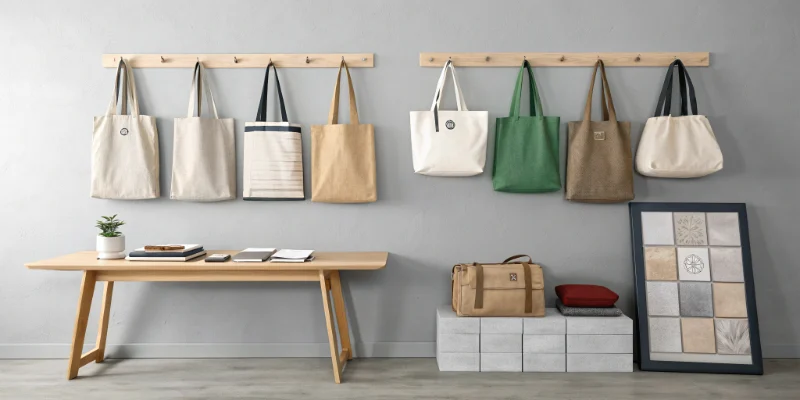
In recent years, canvas bags have truly become one of the most popular options for both packaging and everyday accessories. Their rise isn’t just about fashion—it reflects a shift in how people value practicality, reusability, and more responsible consumption. To me, a canvas bag is a well-balanced choice: it’s sturdy in structure, natural in appearance, and built to last. Whether for daily personal use, brand promotion, or retail packaging, it combines both functionality and aesthetics.
The charm of canvas bags lies in their variety. From lightweight flat totes to structured three-dimensional styles, and even larger designs with both bottom and side gussets—each type has its own unique character and purpose. Understanding these differences helps you choose the most suitable design based on actual needs. Whether you’re looking for a shopping bag, a gift bag, or an event tote for your business, you’ll find a style that fits perfectly.
The above captures why canvas bags have become so popular and outlines their broad uses. Next, we’ll walk through several common canvas bag styles and their best applications—so you can more confidently pick the one that suits your brand or project.
Canvas bags stand out among many types of bags mainly because they combine three key advantages — structural stability, long service life, and high flexibility for customization. For brands, businesses, or retailers, a canvas bag is more than just packaging; it’s a long-term carrier that delivers both visual appeal and functionality. For buyers, it represents reliable material and a wide range of craftsmanship options.
Canvas is known for its tight weave and firm texture. The fabric is thick and not easy to deform. Whether it’s an 8oz lightweight version or a thicker 14oz canvas, it can handle considerable weight. This structural stability makes canvas bags perform well in commercial use, as shopping bags, or even as file bags.
Canvas bags are resistant to wear and tension, making them suitable for repeated, long-term use. After use, if there’s dust or minor stains, a simple wipe or gentle hand wash can restore their clean look. This durability and easy maintenance make canvas bags a cost-effective option for long-term branding, bulk giveaways, and everyday use.
The surface of canvas is smooth and ideal for various printing and sewing techniques. Brands can choose different thicknesses, colors, and sizes based on their needs, and apply multiple printing methods as desired.
For businesses, it serves as a practical carrier that reinforces brand identity; for customers, it offers the freedom to express individuality through details and design.
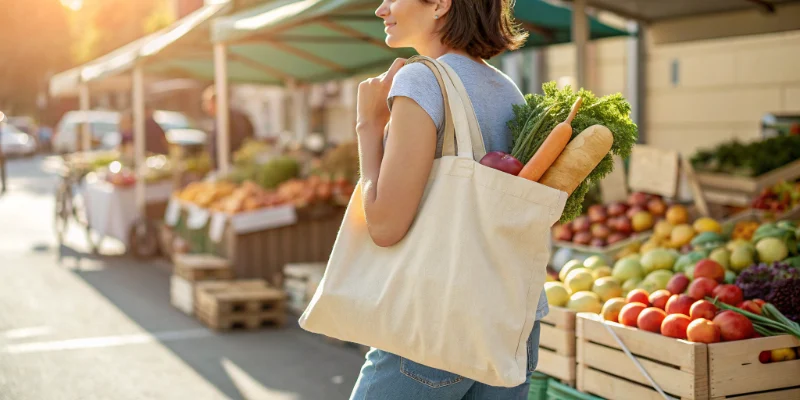
Canvas bags are more durable than disposable plastic bags. True
Canvas bags are made from thick woven fabric, allowing them to carry more weight and last much longer than single-use plastic bags.
Canvas bottle bags only come in fixed dimensions. False
Canvas bottle bags can be customized in size depending on the height and width of the product they’re designed to carry.
Canvas bags have so many uses. Whether it’s for shopping, commuting, gift packaging, or event promotion, they always come in handy. That’s exactly why these bags have remained so popular — they’re practical, durable, and well-designed.
Canvas bags are also a great choice for commuting. The thick fabric can hold a laptop, folders, and a water bottle without feeling bulky. Many companies now customize canvas commuter bags printed with their logos or themed graphics — a small detail that naturally promotes the brand every time employees carry them.
Canvas bags are perfect for gift packaging as well. Their quality texture and reusability make them more thoughtful than disposable wrapping. Businesses often choose them for branded gifts or event giveaways. Recipients tend to keep using the bag afterward, allowing the logo to stay visible and the brand impression to last longer.
At trade shows, music festivals, or corporate events, canvas bags are almost a must-have. With a printed logo or themed design, they can hold brochures, samples, or merchandise — while doubling as a walking advertisement. More importantly, unlike single-use bags that get discarded quickly, canvas bags are durable enough to keep being used long after the event, extending your brand exposure effortlessly.
Canvas bags come in many different designs, each offering its own balance of structure, capacity, and visual appeal. Below are some of the most popular styles you’ll often see in daily use and promotional projects:
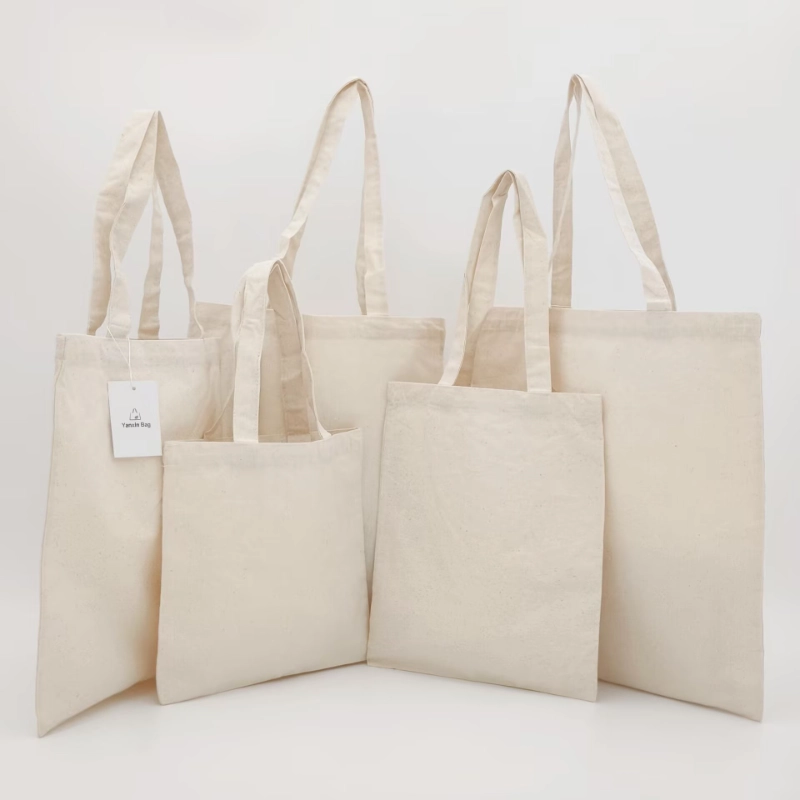
Flat canvas bags are the most classic and widely used style. They don’t have gussets or side panels, keeping the overall structure lightweight and minimal. This makes them low-cost to produce and easy to mass manufacture and transport. For brands, this type of bag is especially suitable as event giveaways, outer packaging, or promotional material bags—it helps control budgets while still offering good visibility for branding.
Because of their simple structure, flat canvas bags are lightweight, easy to carry, and fold down into a compact size, making them great for everyday use. They’re typically made from medium to light-weight canvas between 5oz and 8oz, with plenty of surface area for large logos or full-print designs. Retailers and trade show clients often choose this style because it can be produced quickly, prints well, and meets the needs of short-term promotions or campaigns.
In addition, flat canvas bags are often used as packaging or document bags, with their clean look making brand logos stand out more. For customers who are looking to balance cost and practicality, this is the most cost-effective option among entry-level canvas bags.
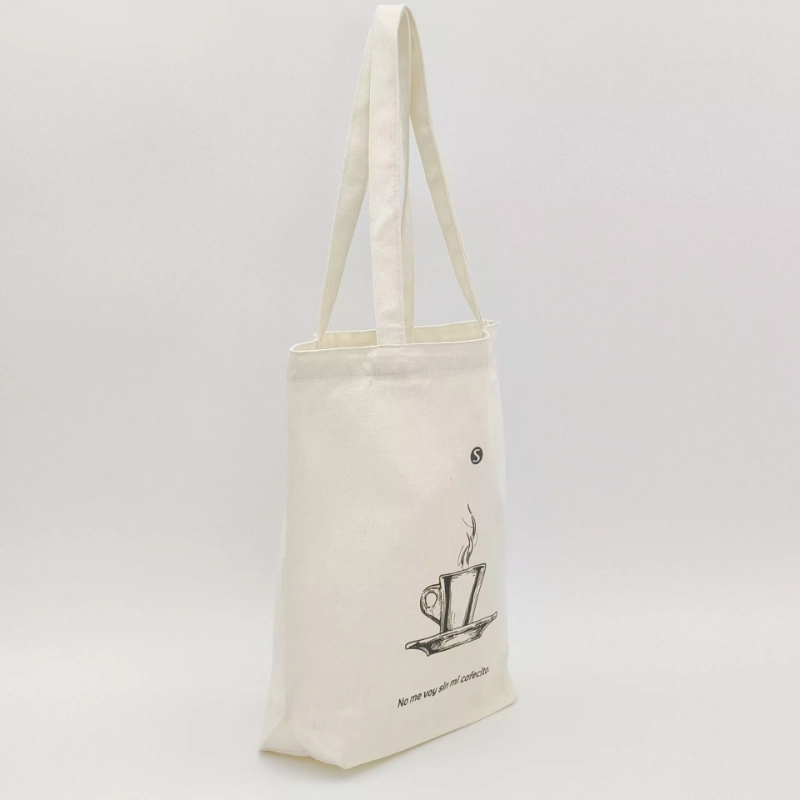
A gusseted canvas bag features an added panel at the bottom, allowing it to hold more items with ease. While the design is simple, it significantly improves the bag’s practicality. The added depth gives it a more structured shape, making it ideal for carrying bulkier items like insulated bottles or lunch boxes.
These bags are typically made with canvas that’s 8oz or thicker, giving them a sturdier feel that doesn’t deform easily. Both front and back panels can be printed, and even the bottom panel offers space for a logo, which is great for designs that need a bit more visibility.
Thanks to its generous capacity and cost-efficiency, this style is a favorite for use as shopping bags, promotional giveaways, or event totes. Many retailers and exhibitors choose it for its reliable structure and solid print performance—making it one of the most practical and well-rounded options for both everyday use and brand exposure.
What makes 3D structured canvas bags stand out is the extra fabric panels added to the bottom and sides, which give the bag a more defined, upright shape. Compared to flat totes or standard gusseted styles, these bags offer a more structured look that feels substantial—perfect for brands that want their packaging to carry a stronger presence.
There are also different ways to construct this style. Some are made with inside seams for a clean, minimal appearance and easier production; others use exposed edge piping for a sharper silhouette that looks especially structured when filled. Another variation features additional topstitching after the main seams are done, which helps the bag hold its shape more firmly—especially when paired with thicker canvas, it can even stand up on its own for a short time.
One particularly eye-catching version is made with a laminated or coated canvas, similar to the structure of jute bags. This treatment gives the bag a stiff, upright form that holds its shape even when empty. Because of its strong visual impact, this type is often used with full-surface prints—bold patterns, artistic graphics, or illustrated designs that turn the entire bag into a statement piece. It’s a popular choice for premium gifting, creative retail packaging, or branded display bags where both functionality and presentation matter.
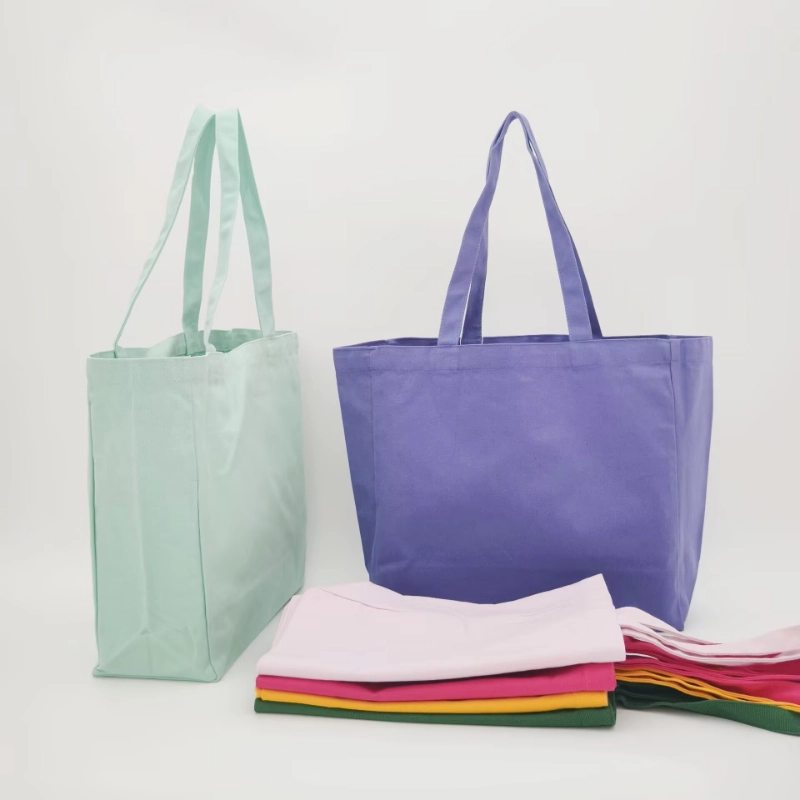
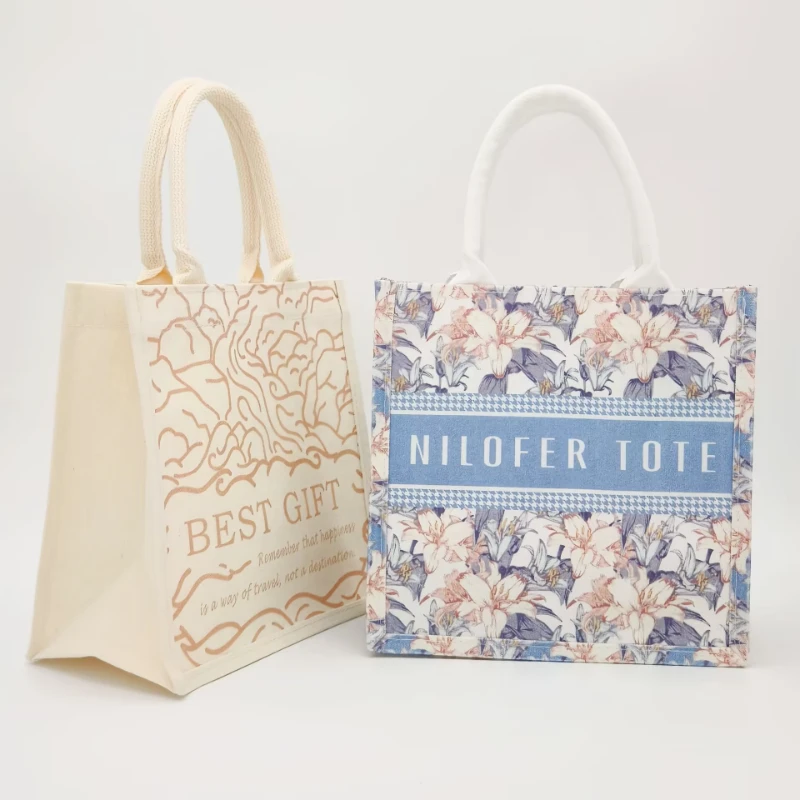
Patchwork canvas bags are more visually playful and instantly eye-catching. What sets them apart is their mixed-material or multi-color panel designs—sometimes with added front pockets, small compartments, or contrasting handles that bring more layers and personality to the look. These bags feel less “standard” and more like something you’d actually want to carry around in everyday life.
Many brands use patchwork canvas bags for creative packaging or promotional giveaways, especially when aiming for a more lifestyle-focused or eco-friendly design vibe. The bag itself already has a built-in sense of design, so even a small logo can stand out and leave a lasting impression. To the user, it doesn’t just feel like a giveaway—it feels like a personal item they’d want to use again.
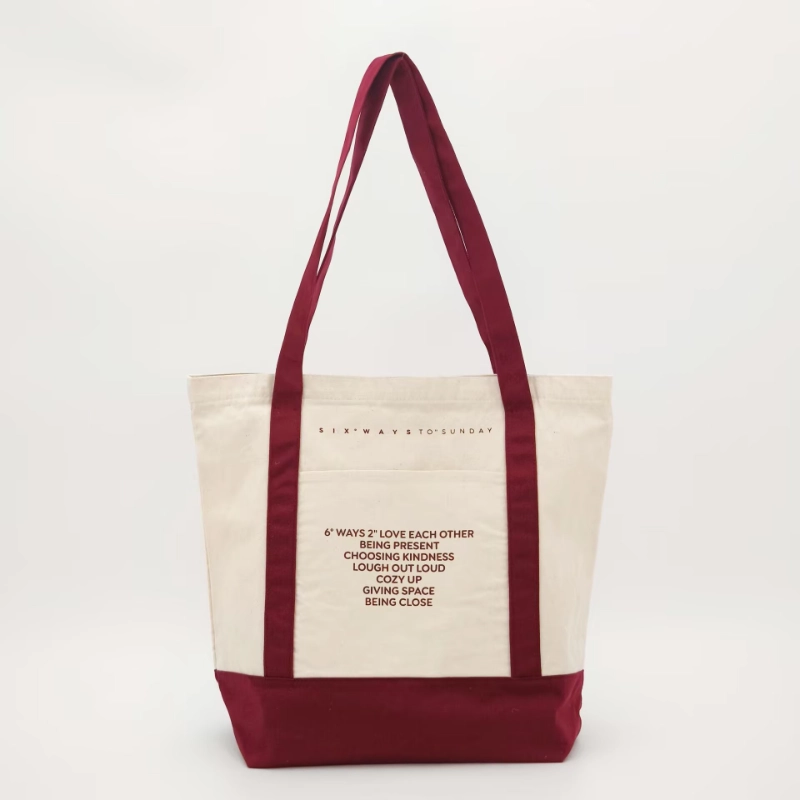
If your brand is looking to create a canvas bag that connects emotionally with users—not just delivers information—patchwork styles are a great place to start.
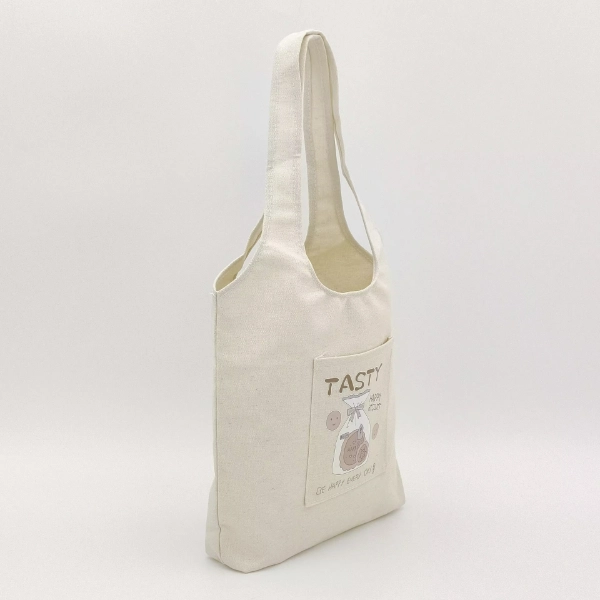
This type of canvas bag falls somewhere between a classic tote and a vest-style bag. Its most distinct feature is the one-piece handle design—the handle and the bag body are cut from a single piece of fabric, rather than being sewn on separately. This makes the overall look clean and lightweight, and gives a natural, thoughtful feel when carried.
The bag has a wide opening and generous capacity. While the bottom has some structural support, the fabric remains soft and foldable. It’s great as a daily shopping bag, a backup bag, or a light carry-all for quick outings. Especially for events or giveaways, this style is popular because it folds easily, doesn’t take up much space, and is easy to distribute.
Many brands choose this design for giveaways or lifestyle packaging. Paired with illustrations, patterns, or minimal printing, it can achieve a recognizable look without being flashy. And since it’s simple and practical, users are more likely to use it in daily life—naturally extending your brand’s visibility.
The foldable canvas bag is designed so that when it’s not in use, it doesn’t take up space—it’s easy and practical to put away. Although canvas is thicker than materials like polyester, so when folded it’s slightly bulkier, the feel is sturdier, more durable, and has better quality.
The most common design puts a storage strap sewn into the middle of the bag, which you hardly notice when it’s open, but it’s very useful when folding. The usual folding method is to fold the bag inward a few layers, then fold it in half, and finally close it with the central zipper. The result is a compact bundle that fits nicely in a car, purse, or drawer.
This type of canvas bag is often used to package slender bottled products like beverages, glass bottles, olive oil, or specialty sauces. It also pairs well with gift boxes or seasonal gift sets. Typically designed with a vertical orientation, it looks minimalist and feels solid in hand—more premium and durable than paper or plastic.
In practice, the most common versions are single-bottle and double-bottle bags. The single-bottle version is compact and practical, suitable for individual product packaging or promotional giveaways. The double-bottle version often incorporates a middle divider to prevent bottles from bumping into each other, making it more stable when carried. The dimensions aren’t fixed—you can adjust height and width according to the product, making it quite flexible.
These bags come in many sizes: small ones for jewelry, fragrances, or skincare items, and larger versions for event giveaways, lunch storage, or general daily use. Some people use them to carry foldable clothes, reusable bottles, or toiletries—they’re a handy everyday companion.
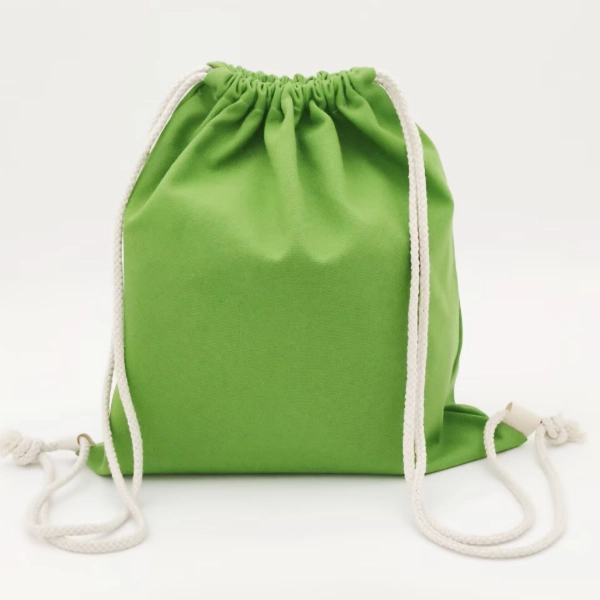
There’s also a lot of room for visual design with canvas drawstring bags. Whether it’s brand slogans, illustrations, or simple graphic layouts, this bag type works well. For brands looking for something lightweight, usable, and visually coherent, canvas drawstring bags are definitely worth considering.
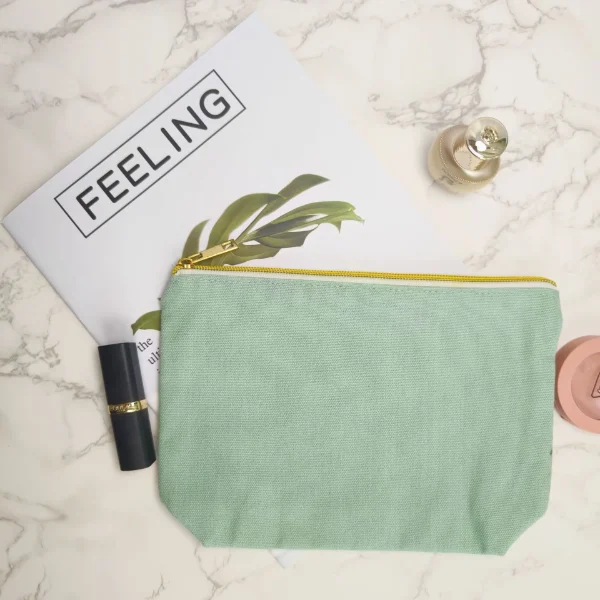
The canvas makeup bag is a well-loved small pouch—it has a simple structure and a charming shape that feels very much like part of everyday life. While it’s most commonly used to store cosmetics, many people also use it for stationery, medicine, jewelry, or as a travel organizer.
These bags come in all kinds of shapes and sizes, from slim flat pouches to boxy 3D styles. Some come with lining or compartments, so things stay more organized inside. Compared to plastic or nylon, canvas has a warmer, softer touch and a more natural look. Even when printed with illustrations or graphics, the results often feel understated and appealing.
Many brands use this type of bag as a cultural creative item or giveaway pouch—it’s practical, compact, and likely to be kept and reused. Whether it’s given as a gift or used as a value-added item, this little bag always adds a nice extra touch.
Most grocery bag styles feature a wide opening that makes it easy to toss things in. Many also include inner pockets or supporting fabric panels to help keep things in place. Common setups like four- or six-slot interiors are great for holding bottles—juice, milk, or other drinks—so they don’t knock into each other or fall over. These compartments aren’t always traditional “pockets,” but more like cloth pouches that hold the bottles snugly, keeping the whole bag more balanced when carried.
Canvas bags are suitable for full-surface printing with custom designs. True
The smooth surface of canvas fabric supports various printing methods, including full-surface designs like illustrations and patterns.
Canvas is waterproof and suitable for wet item storage. False
Canvas is not naturally waterproof and may absorb moisture unless specially treated or coated.
There are many different canvas bag styles—flat bags, gusseted bags, drawstring bags, foldable designs, structured 3D shapes… and honestly, there’s no single “best” choice. It really depends on how you plan to use the bag and the kind of impression you want it to make.
For promotional giveaways, events, or large-scale orders, simple designs like flat totes or bottom-gusseted bags are quite popular. They’re easy to produce, budget-friendly, and practical enough for daily use. A lot of brands use them for printing their logos and handing out at events.
If you want something with more visual presence—maybe for brand image, retail displays, or creative projects—then structured or gusseted styles might be a better fit. These bags have a bit more shape and tend to stand out more when displayed or carried.
Some people also prioritize specific features. For example, do you want a foldable bag for on-the-go convenience? Do you need compartments inside to hold drinks or organize items? These details come down to your product type and what your audience prefers.
At the end of the day, there’s no one-size-fits-all answer. Start by thinking about how the bag will actually be used, then choose a structure, size, and shape that fits that need. That way, you’ll end up with a bag that not only looks right, but feels right too.
If you’re looking for canvas bags for brand promotion, daily retail, or large-scale events, Yanxin Bag is a professional canvas bag manufacturer with extensive experience in producing a wide range of custom canvas bag solutions. We offer flexible options across different materials, styles, and printing methods.
From budget-friendly flat totes to premium 3D structured bags, or even drawstring and foldable styles for specific needs—we provide dependable production support as a trusted canvas bag factory. Get in touch with Yanxin Bag to create canvas bags that truly match your brand’s purpose, style, and budget.
Planning to design or customize canvas tote bags for your business?
This article gives a complete overview of canvas tote bags, explaining their materials, structures, printing methods, and customization options. It helps businesses understand how to combine practicality with branding to create versatile, high-quality promotional bags.
Wondering what makes canvas bags both eco-friendly and versatile?
This article analyzes the strengths and weaknesses of canvas bags in real-world use, from durability and reusability to maintenance and style. It helps readers decide when canvas is the best choice for daily use or brand promotion.
Want to understand Not sure which fabric type works best for your canvas bags?
This guide compares cotton, polycotton, and polyester fabrics in terms of texture, durability, cost, and printing compatibility. It helps businesses choose the right base material for producing high-quality canvas bags that meet functional and branding needs.
Choosing between jute and canvas bags for your brand campaign?
This article compares jute and canvas in terms of texture, strength, eco-friendliness, and branding potential. It offers guidance on how to align your material choice with sustainability values while maintaining aesthetic appeal.
Want your canvas tote bags to stay bright and durable for longer use?
This article provides a complete care and cleaning guide for canvas tote bags. It explains the correct washing, drying, and stain-removal methods for maintaining the bag’s color, shape, and print quality, helping you keep promotional bags in perfect condition.
Get a free quote and expert consultation today. Let's bring your brand vision to life.
1 Learn how companies can showcase their commitment to sustainability and attract eco-conscious consumers.
2 Discover why canvas material is favored for bags, focusing on its durability and sustainable qualities.
3 Discover the numerous advantages of canvas grocery bags, including their durability and eco-friendliness, making them a smart choice for shopping.
Answer: Canvas bags can be made from 100% cotton canvas, polyester-cotton blends, or full polyester canvas. The choice of material affects the bag’s weight, durability, and printing performance.
Answer: Canvas bags are valued for their sturdy weave, structural strength, and long-lasting performance. They combine practicality with aesthetic appeal, making them suitable for both personal use and brand packaging.
Answer: The fabric weight determines the bag’s thickness and load-bearing capacity. For example, 8oz canvas is light and flexible, while 14oz canvas offers higher strength and better shape retention.
Answer: No. While many canvas bags are made from natural cotton, some use polyester or blended fibers for better water resistance, printing quality, and lower production cost.
Answer: Canvas has a smooth, flat surface that supports various printing and embroidery methods, allowing brands to showcase logos, designs, and colors vividly while maintaining a premium texture.
Answer: A gusseted canvas bag has an added bottom panel that expands capacity, making it ideal for carrying bulkier items like bottles, books, or lunch boxes without losing shape.
Answer: Absolutely. Canvas bags are strong, washable, and versatile—making them perfect for daily activities like shopping, commuting, or carrying personal items.
Answer: 3D structured canvas bags have defined side and bottom panels that give them shape and presence, making them ideal for premium gifts, retail packaging, or stylish everyday totes.
Answer: Canvas bags are thicker, sturdier, and ideal for heavy-duty use, while muslin bags are lighter, breathable, and often used for produce, packaging, or small gifts.

Order or no-order we are Always here to help you!
We will contact you within 1 working day, please pay attention to the email with the suffix “@yanxinbag.com”.
Order or no-order we are Always here to help you!
We will contact you within 1 working day, please pay attention to the email with the suffix “@yanxinbag.com”.